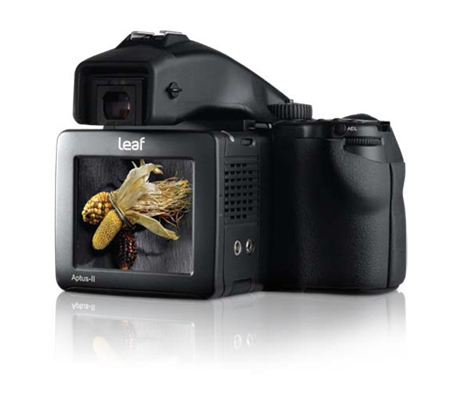
This is the second portion of the medium format post that I generated a couple days ago. I'm going to list out my considerations for going to medium format digital in comparison to shooting 35mm full-frame digital.
The least expensive digital medium format camera is the Mamiya DM-22 coming in at a cool $9,995. Offering a 22MP sensor on an Mamiya AFD-III body and a 80mm f/2.8 (non-leaf shutter) lens. It's enough to get started.
Yet, that price is already more than what I paid for my Nikon D3, 14-24mm f/2.8G, 24-70mm f/2.8G, 70-200mm f/2.8G, 85mm f/1.4D.
Furthermore the Nikon D3 with those lenses is the right tool for what I do 90-95% of the time. Here's a short list of how it excels over medium format cameras for my purposes:
-faster and smarter autofocus
-more autofocus points (51 vs. 1)
-faster lenses that cost less money
-faster rates of shooting
-weatherproofing
-better high-ISO performance
-professional-grade build (magnesium alloy)
-smaller files mean easier digital manipulations (Photoshop)
Here's how medium format cameras in general are better than my Nikon D3 for my purposes.
-potentially faster sync speeds with leaf shutter lenses (better ambient light control)
-better dynamic range (more detail in highlights/shadows)
-more megapixels (details)
-sharper images (without AA filters)
For a cool $10k (minimum) I can have a camera that captures better skin-tones particularly when it comes to high-dynamic range situations. For a photographer that shoots high-contrast lighting, it would behoove me to explore the possibilities of medium format.
But that's assuming that all things are equal. I mean, how often will I be able to shoot at the base ISO25 (on the DM-22)? How many frames will I miss because I can't shoot more than 1fps? How many frames will I lose to autofocus inconsistencies? You'd be surprised at how often the D3 hunts for focus in low-light situations and even sometimes outside!
Technologically speaking, the 35mm companies seem like they're well ahead of the game. Squeezing more megapixels and higher ISO out of smaller sensors and building upon an already technologically advanced camera body system full of features that will likely take the MF camera companies years to develop. It's no wonder that the 35mm dSLRs are the camera of choice for photojournalists, sports photographers, and even wedding photographers today. Hell, I think every professional photographer has at least 1 dSLR but not every professional photographer owns a MF body/back.
But even the 35mm flagship cameras aren't perfect! In this post, I listed my wishes for the D4 but deep-down I know only several of those wishes are feasible with the current 35mm limitations. There are certain laws of physics that even Nikon and Canon can't break, although they keep trying :)
The question for me becomes, "how long can I wait?" The Nikon D4 is more than 1 year away. The face of photography is changing and I'm wondering whether or not I need MF just to stay ahead of the game? Technological advances are inevitable. Today's innovations will be tomorrow's mainstream technology. Prices will continue to tumble.
This decision would be a lot easier if cost weren't an issue!

No comments:
Post a Comment